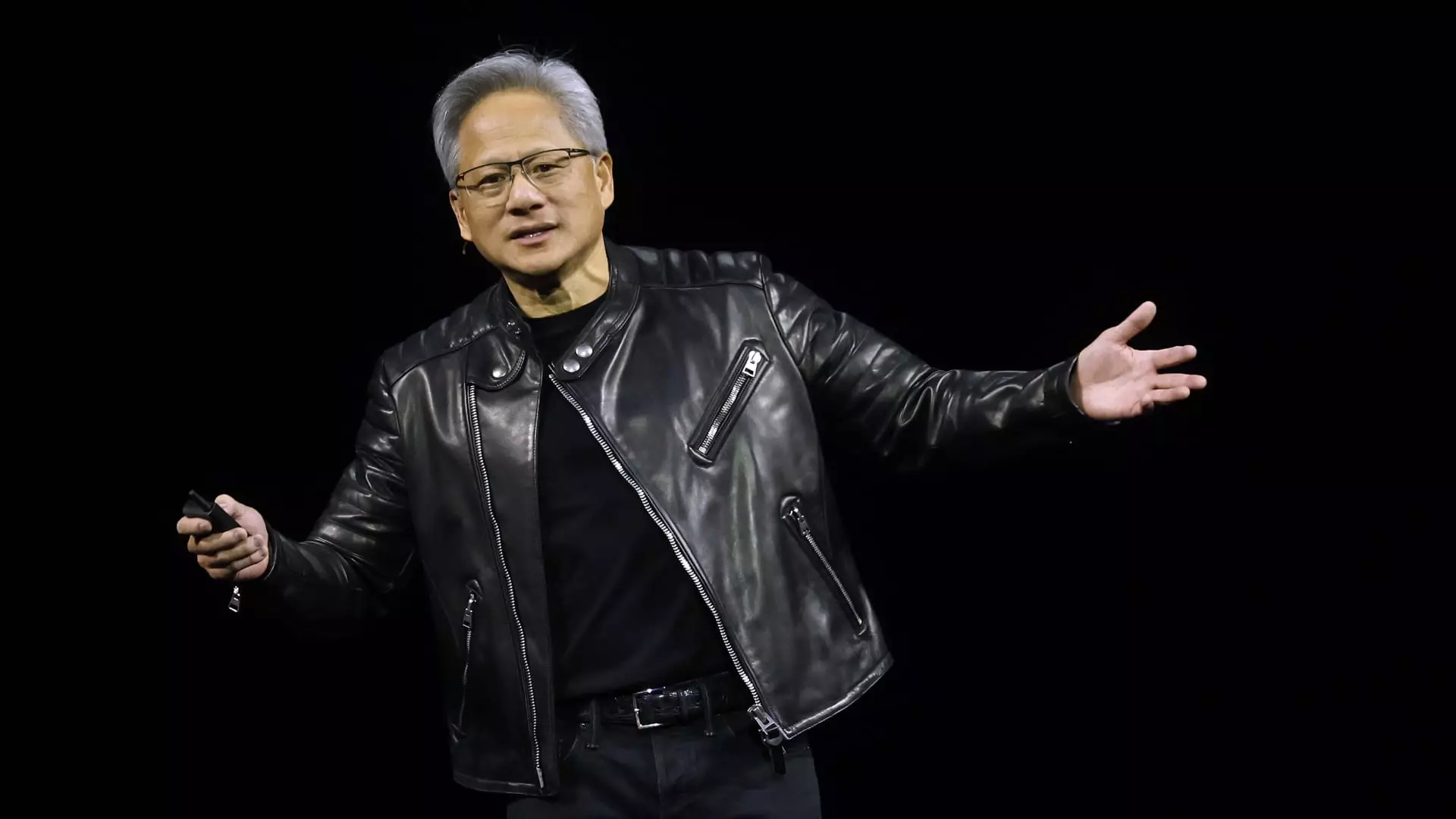In an unexpected turn of events, Nvidia has announced a staggering quarterly charge of approximately $5.5 billion linked to the export of its H20 graphics processing units (GPUs) to China. This regulatory barring marks a pivotal moment not just for Nvidia, but for the entire technology industry that is rapidly evolving under government scrutiny. The news echoes a harsh reminder that amidst robust tech growth, geopolitical tensions can facilitate rapid regressions, thereby altering investment landscapes. The immediate consequence was a notable 6% decrease in Nvidia’s stock during after-hours trading, raising questions about the sustainability of the company’s previously skyrocketing valuation.
Only a few weeks earlier, on April 9, the U.S. government made it clear in a filing that companies such as Nvidia would need a special license to export chips like the H20 to China, an edict that can significantly impede Nvidia’s revenue streams while simultaneously ensuring national security. This juncture is significant as it represents a distinct shift in regulatory stance, emphasizing an increasing urgency to govern technology with potential military applications, which is particularly pertinent in an era marked by fierce international competition.
Biden’s Export Restrictions: A Double-Edged Sword
The Biden administration’s strategic clampdown on chip exports initiated in 2022 laid the groundwork for this evolving scenario. Initially aimed at regulating AI chip exports to safeguard national interests, these controls have morphed into an extensive framework that may inadvertently mire U.S. firms in a challenging operational quagmire. Nvidia’s CEO Jensen Huang recently disclosed the startling data that revenue from China had plummeted to a mere 50% of pre-export control levels, painting a sobering picture of the company’s financial health amidst external pressures.
Furthermore, competition from homegrown Chinese firms is exacerbating the situation. In its recent annual filings, Nvidia alarmingly noted that it now recognizes Huawei as a competitor. The strategic implications are profound; losing ground to adversarial firms not only poses a direct financial risk but threatens U.S. dominance in the rapidly expanding AI sector. In an ambitiously technological world, ceding territories can lead to broader implications, including loss of influence and market believability.
The Technological Tug of War
The H20 chip, which was optimized to work within U.S. export regulations, is inherently limited compared to its counterparts—the H100 and H200 chips. While tech purity and design excellence can still attract affluent clients, the functionalities of the H20 pales in comparison due to its slower interconnections and reduced bandwidth. Companies like DeepSeek in China, leveraging H20 chips for their competitive AI models, exemplify how effectively invested resources can potentiate rivals. The race for tech supremacy in AI is not merely about developing superior chips; it’s about harnessing a competitive advantage that can stem from innovation, strategic allegiances, and favorable market conditions.
Moreover, recent “AI diffusion rules” set to take effect next month signal a tightening grip on export controls, bringing further complication to an already tense trading landscape. Nvidia’s concerns open a broader dialogue about the potential stifling of innovation due to bureaucratic intricacies. The balance between security needs and the thrust for technological advancement needs urgent reevaluation, yet it’s a conversation that feels distressingly sidelined.
American Competitiveness at Stake
Amid the upheaval, Nvidia delivers a strong message: stifling further chip controls can adversely affect not just existing market players but might also lead to an erosion of overall U.S. technological competitiveness. Irrespective of national defense concerns, the denial of access to a vital market shared by some of the world’s leading AI researchers could reverse the collaborative spirit that fuels innovation in the tech industry. An alarming half of the global AI research community originates from China, and many of those talents are contributing to the U.S.-based AI labs that drive today’s advancements.
As Nvidia prepares to release its fiscal first-quarter results on May 28, the result of the confluence of domestic regulation and international competition remains uncertain. This charged atmosphere will redefine the strategies companies like Nvidia adopt and implicates larger questions regarding the future trajectory of American technology firms in the face of rising restrictions and competitive pressures. The gravity of these developments cannot be understated; they signal a crucial moment for an industry that thrives on openness and collaboration, now threatened by an encroaching wall of bureaucratic limits.

